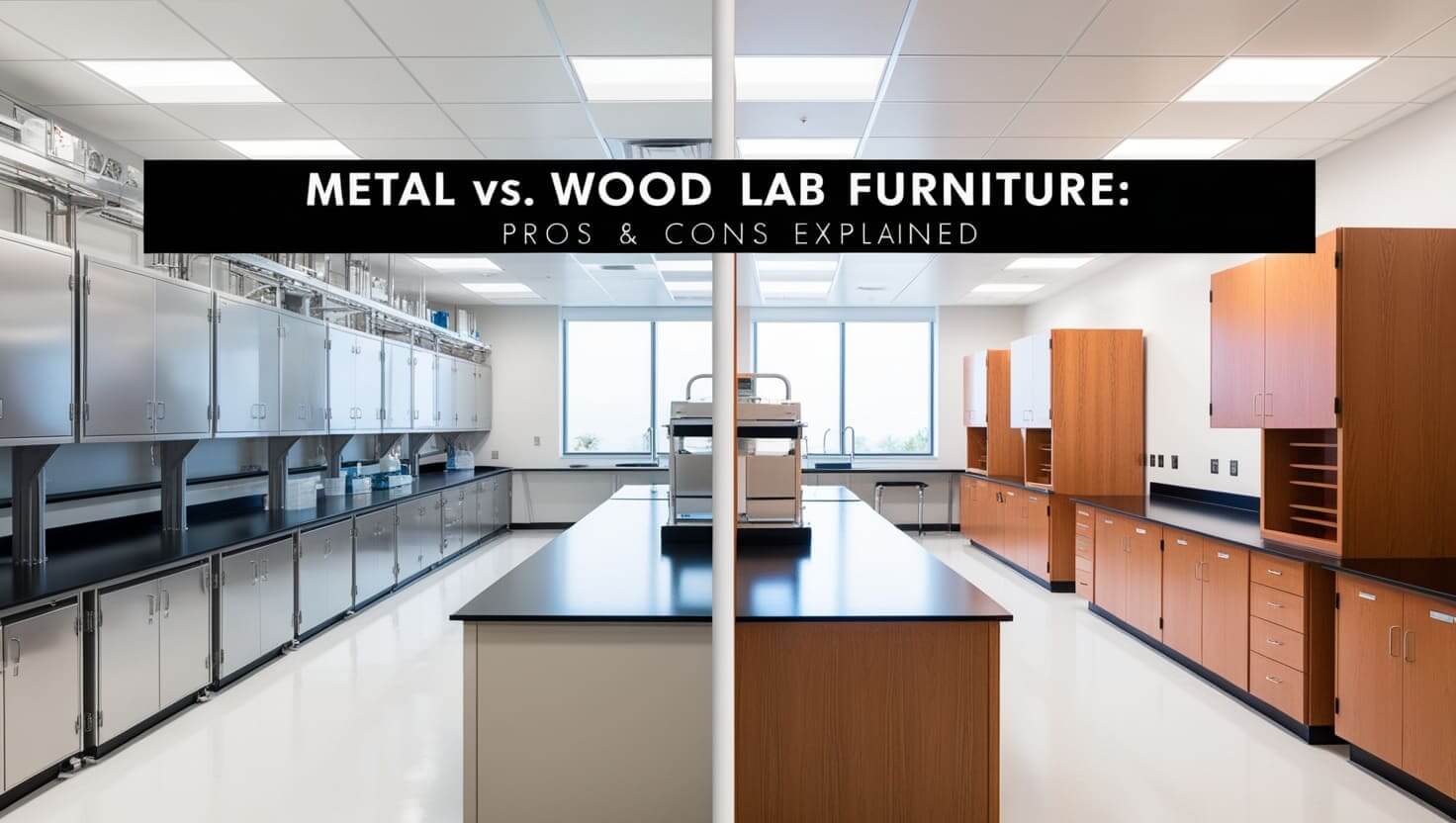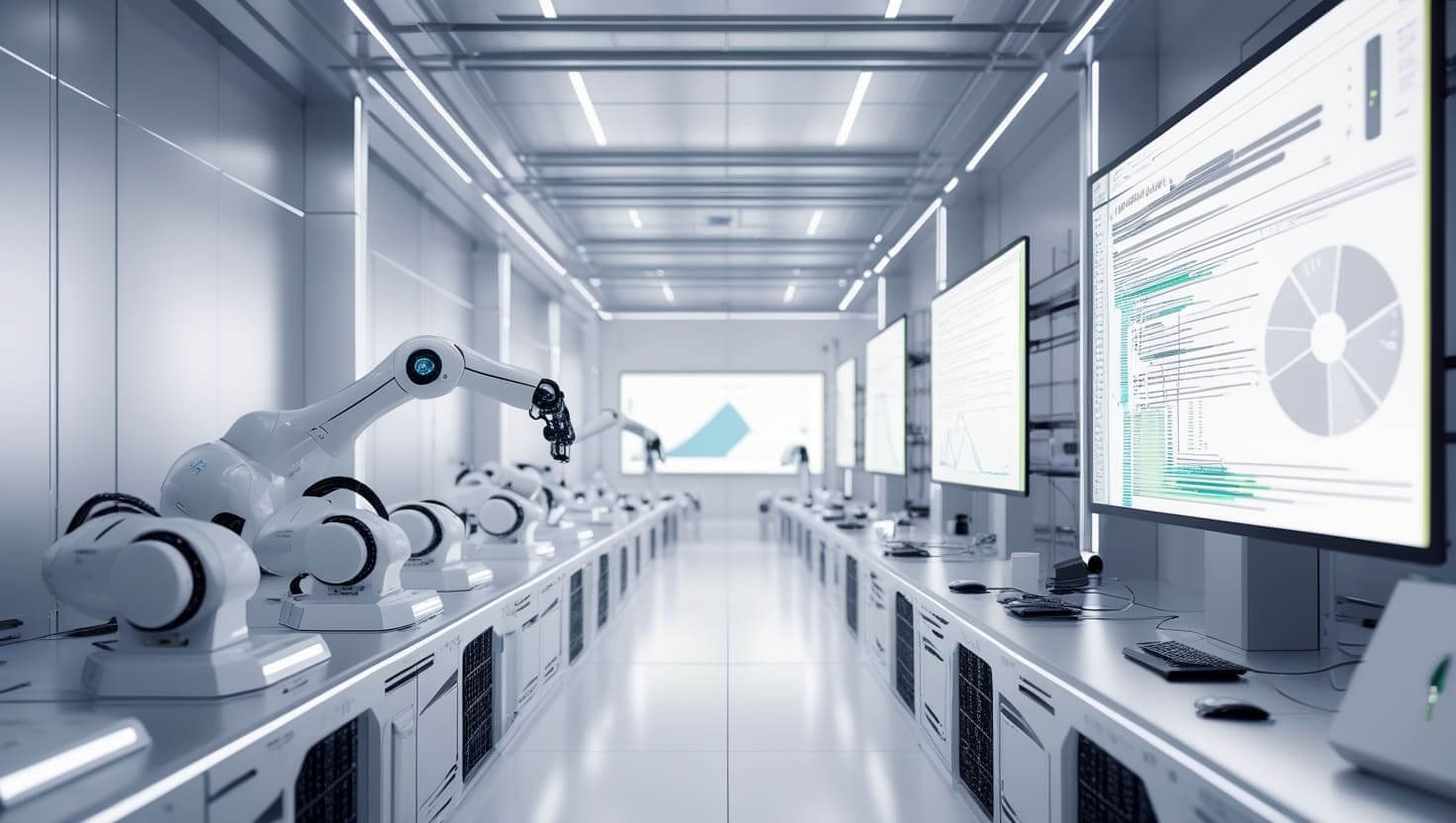When designing or upgrading a laboratory, selecting the right type of furniture is a crucial decision that affects not only the workflow but also safety, durability, and maintenance costs. Among the most common choices are metal lab furniture and wood lab furniture. Both materials offer distinct advantages and challenges, making it essential to understand their pros and cons before making a purchase.
In this article, we will compare metal lab furniture and wood lab furniture across several criteria including durability, cost, chemical resistance, maintenance, aesthetics, and customization options. We will also touch upon what to look for in trusted manufacturers and suppliers when buying lab furniture.
1- Durability and Lifespan
One of the key factors in selecting laboratory furniture is its ability to withstand heavy usage over long periods.
Metal Lab Furniture:
Metal lab furniture—typically made from steel, stainless steel, or aluminum—is known for its superior strength and durability. It can handle high-weight equipment, resist wear and tear, and last for decades with minimal issues. Metal frames are less prone to warping or cracking over time, making them ideal for high-use or industrial labs.
Wood Lab Furniture:
Wood lab furniture, often constructed from hardwood or plywood with a laminate finish, also offers decent durability. However, wood is more susceptible to moisture damage, warping, or termite infestation. With proper care and sealing, it can still last a long time, particularly in dry environments.
✅ Verdict: Metal wins for durability in high-traffic and industrial labs.
2- Chemical and Heat Resistance
Laboratories often deal with volatile chemicals and extreme temperatures, which can degrade furniture over time.
Metal Lab Furniture:
Most metal lab furniture is powder-coated or treated with epoxy finishes to resist chemicals and corrosion. Stainless steel, in particular, is highly resistant to acids, solvents, and heat, making it suitable for chemical labs or wet environments.
Wood Lab Furniture:
Wood lab furniture can be treated with chemical-resistant laminates and coatings, but it generally doesn’t perform as well as metal in environments where chemical spills are frequent. Prolonged exposure to harsh substances can cause the wood to degrade.
✅ Verdict: Metal is a safer and more reliable choice in chemically intensive settings.
3- Aesthetics and Design Flexibility

Laboratory design isn’t just about function; aesthetics and customization play a role, especially in modern research facilities or educational institutions.
Metal Lab Furniture:
Metal lab furniture offers a sleek, industrial look. Though it’s not traditionally associated with warm or inviting spaces, modern powder coatings and modular designs have improved its aesthetic appeal. However, customization can be limited compared to wood.
Wood Lab Furniture:
Wood lab furniture provides a warmer, more natural appearance, often preferred in educational and academic labs. It’s easier to customize in terms of color, shape, and size. Wood cabinetry and desks can be stained or painted to match the design theme of the facility.
✅ Verdict: Wood is more aesthetically pleasing and flexible in custom designs.
4- Cost Comparison
Budget plays a crucial role in furniture selection, especially for large lab installations.
Metal Lab Furniture:
Generally, metal lab furniture is more expensive upfront due to the materials and manufacturing processes involved. However, its long lifespan and minimal maintenance can offset the initial investment over time.
Wood Lab Furniture:
Wood lab furniture tends to be more affordable initially, especially in institutions with tight budgets. However, it may incur additional maintenance and replacement costs over time, particularly in demanding environments.
✅ Verdict: Wood is better for short-term budgets, while metal offers better long-term value.
5- Maintenance and Cleaning
Maintaining cleanliness and hygiene is vital in laboratory settings.
Metal Lab Furniture:
Metal lab furniture is easy to clean and disinfect. Its non-porous surface does not absorb spills or contaminants, reducing the risk of bacterial or chemical buildup.
Wood Lab Furniture:
Wood lab furniture requires more care during cleaning. While laminate surfaces can be wiped down, untreated or older wooden furniture may absorb moisture, making thorough sanitation more challenging.
✅ Verdict: Metal is easier to maintain and sanitize.
6- Environmental Sustainability

Sustainability and eco-friendliness are growing concerns in the construction and lab furnishing industry.
Metal Lab Furniture:
While the production of metal lab furniture involves significant energy, metals are highly recyclable. Recycled steel and aluminum can reduce the environmental impact over time.
Wood Lab Furniture:
Wood is a renewable resource, and when sourced from sustainable forests, it can be environmentally friendly. However, deforestation and poor harvesting practices can make wood less eco-conscious.
✅ Verdict: Both materials can be sustainable if sourced and manufactured responsibly.
7- Installation and Modularity
The ease of installation and the ability to reconfigure furniture is important for labs that evolve over time.
Metal Lab Furniture:
Many metal lab furniture systems come in modular designs, allowing for flexible installation and future expansions. However, metal components can be heavy, making them harder to move.
Wood Lab Furniture:
Wood lab furniture is generally lighter and easier to handle during installation. While not always modular, it can still be adapted or reassembled with some effort.
✅ Verdict: Metal offers better modularity, while wood is easier to install.
Tips for Choosing the Right Manufacturers and Suppliers
Whether you go with metal or wood, selecting reliable manufacturers and suppliers is critical to ensure safety, compliance, and quality.
- Certifications: Choose manufacturers who adhere to ISO, SEFA, or other industry standards.
- Customization Options: Look for suppliers who offer custom sizes, finishes, and layout services.
- Support and Warranty: Good suppliers provide post-installation support and long-term warranties.
- Client Portfolio: Established manufacturers often have a proven track record with labs in your industry—be it educational, pharmaceutical, or research-based.
✅ Check out trusted manufacturers and suppliers like Labcreator and Labturnkey , known for offering both metal lab furniture and wood lab furniture solutions across India and abroad.
Final Thoughts
Both metal lab furniture and wood lab furniture have unique benefits and limitations. Metal is the preferred option for high-durability, chemical-heavy, and industrial lab settings. In contrast, wood is suitable for academic and dry labs that value aesthetics and budget.
Your choice should depend on the specific needs of your laboratory, available budget, and long-term usage expectations. Most importantly, work with experienced manufacturers and suppliers who understand the nuances of laboratory design and can guide you toward the right solution.



